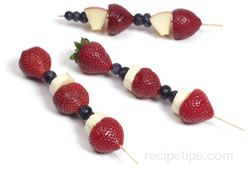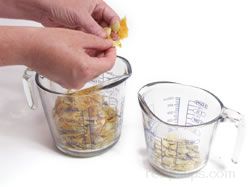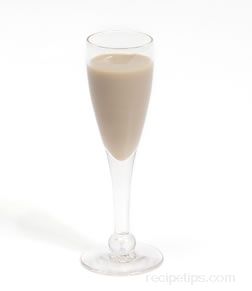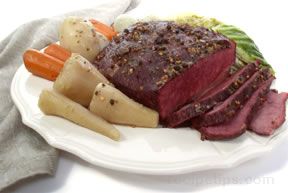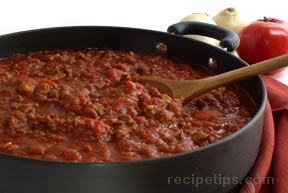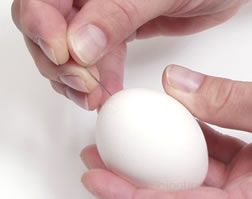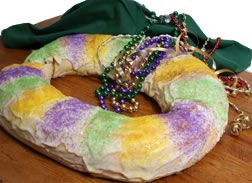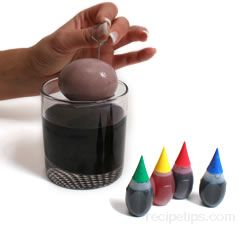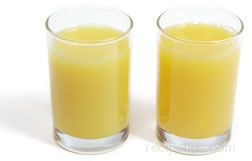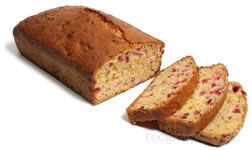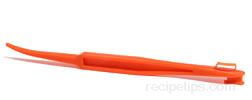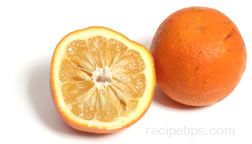Juicing Oranges
Orange juice can be used as a beverage straight from the orange without adding any other ingredients. It is also used to enhance the flavor of many sweet and savory dishes. Because of it high content of vitamin C (ascorbic acid), orange juice can also be brushed on fruits and vegetables that brown easily when exposed to air or it is added to water and the fruit is soaked in the acidulated water for a short period of time to prevent it from browning. Shown below is a common method of removing the juice from the oranges.
| The oranges should be room temperature or warmer before the juice is removed. This will make it easier to squeeze the fruit and produce more juice. | |
| If oranges are not at least room temperature, warm them by placing in the microwave. First poke the skin with a fork, being careful not to poke all the way through the skin to the flesh.
Place the orange(s) in the microwave on high for 20 to 30 seconds. |
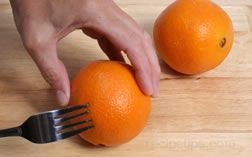 |
|
Oranges can also be warmed by placing them in a bowl and pouring boiling water over them. Allow them to sit in the hot water for 30 seconds. Another method for warming the oranges is to place them in an oven preheated to 300°F for 3 minutes and then allow them to cool before handling. |
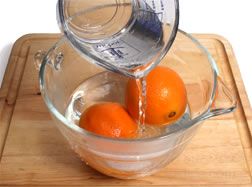 |
| After the oranges have been warmed, allow them to cool until they are easily handled and then roll them on a solid surface using the palm of your hand. Roll until you feel the flesh softening. |  |
|
After rolling the oranges, cut them in half crosswise. Place one half of the orange on the juicer, apply pressure and twist the fruit to remove the juice. The juice can also be removed by squeezing the orange by hand. |
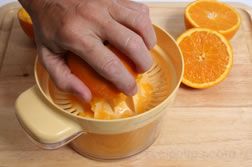 |
|
Remove all the seeds from the juicer once you have finished. If desired, some of the extra pulp that has collected in the bottom of the juicer can be added to the orange juice once the seeds have been removed. If it is necessary to use pulp-free juice, strain juice to separate any pulp that may have gotten into the juice. |
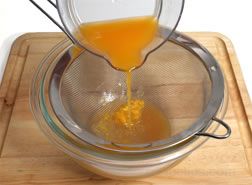 |
|
Serve orange juice chilled. |
 |






